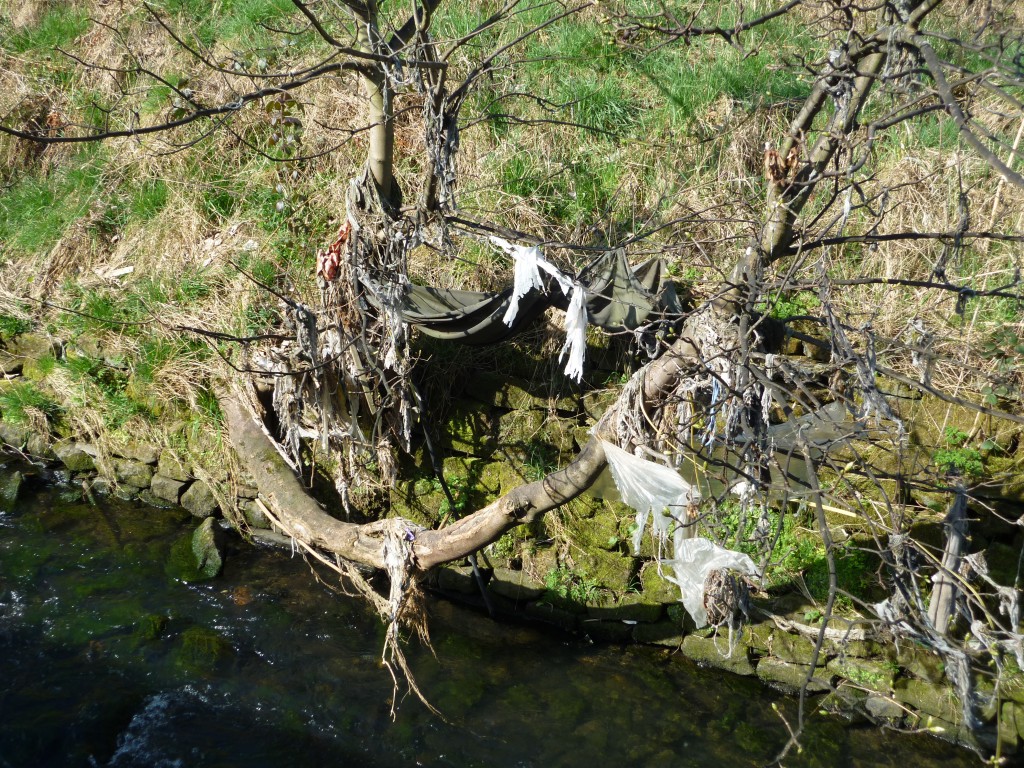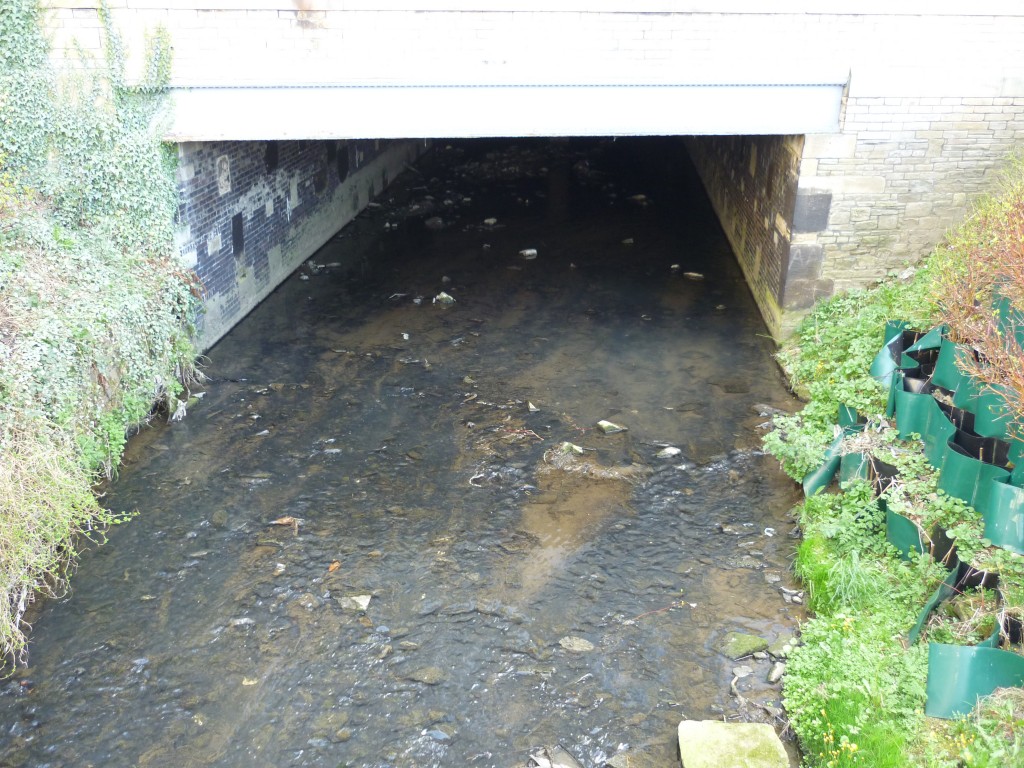[posted by Steve Bottoms]
I’m responding here to Simon’s post, “Shipley before the River”, which makes some interesting points about the apparent invisibility of the town’s river (I’m assuming he means the Aire, though there’s also Bradford Beck of course) within the town itself…. That is, he couldn’t find any evidence of the river being represented in images, signposts, local amenities, etc. This is intriguing, given that Shipley owes its existence to its waterways: as Ian Watson’s helpful Shipley History website suggests, the original pre-Norman settlement was probably established here because it’s the place where two rivers meet… and then the town owes its modern, industrial identity and expansion to the establishment of the Leeds-Liverpool canal (which is of course fed by the Aire) in the late 18th C. Therea again, perhaps it’s that very industrial heritage — the old waterside mills etc. — that create a distance between the more lived-in parts of the town and the waterways themselves. So perhaps this disconnect has been here for a very long time?
It’s on the north side of the river that people actually live close to the water, and of course technically the north side of the river is Baildon, not Shipley at all! I’ve asked a lot of people what difference that makes, and the consensus seems to be – well, not much. Maybe Shipley and Baildon are a bit like Newcastle and Gateshead, all one thing really. And of course it’s all supposed to be part of Bradford now… Traditionalists might complain about this: Shipley once had an independent town council of its own, before being absorbed by Bradford in the 1970s. But the nature of jurisdictions is that they get blurry anyway: it was Shipley council that, during the 1950s, built the housing estates on either side of Roberts Park, on the north side of the river — so these were Shipley council houses, but the tenants paid rates (as opposed to rent) to Baildon council. Confused yet?
But to return to Simon’s points about the relative invisibility of the river in the town, we could turn that round and mention the relative invisibility of the town from the river. I’ve been doing a bit of a “literature search” in books about the River Aire, and it’s striking how totally overlooked Shipley is in these accounts. So for example, Ron Freethy’s Exploring the River Aire (one of those old-style, well-illustrated, paperback guide books) traces the river from its source at Malham all the way to Airmyn (the village where the Aire meets the Ouse), mentioning all points of interest along the way. There’s a section on Saltaire and Titus Salt, which includes a photograph of the Boathouse before it was a pub, with rowing boats for hire moored outside it… (by all accounts, this picture must have been taken quite a while ago! – though there’s no publication date on the book) But the next section is simply called “Onwards to Leeds”. This mentions “The journey from Shipley into Leeds”, but Shipley itself doesn’t rate a mention except as something to be left!
It’s a similar story in John Ogden’s Yorkshire’s River Aire (this one does have a publication date – 1976 – and a foreword by Jimmy Savile!). There is a chapter titled “Titus Salt” which talks about Bingley as well as Saltaire, and then the next chapter is called “Bradford”, and deals with Bradford Beck as a tributary of the Aire… But this is then followed by a chapter “Mainly about Flying” (featuring the fascinating tale of Leeds/Bradford airport – or Yeadon airport as it once was). Shipley rates all of two sentences at the start of this chapter, simply by way of acknowledging the point at which river and beck converge… “The town is a busy, stone-built centre of the worsted industry and today appears on the map to be a mere northern extension of Bradford. But for goodness sake don’t say that to a local inhabitant; they are fiercely proud of their own identity.” Wow – belittling and patronising all in one go!
A more recent entry in this minor literary sub-genre of “books tracing the River Aire downstream” is Andy Owens’s Walking on Aire (4ward books, 2010), which is a vanity-published comic travelogue written by a Halifax-based would-be Bill Bryson. It’s actually quite entertaining at times, and pleasingly self-deprecating in tone (Owens moans about having to do his epic navigation of this “exotic” river on spare weekends, going home in between times to earn his keep…). Once again we start at Malham, and wend our intermittent way to Saltaire, but then – interestingly (?) – Baildon features quite prominently as “the next port of call”, where “I could find nothing whatsoever to say about the place”. Owens recounts pub conversations with local yokels drinking “Black Sheep’s Muff” in which he desperately tries to unearth something worth saying about Baildon, and eventually discovers tidbits such as the fact that the late lamented Countdown presenter Richard Whiteley was born here… But after spending four whole pages finding Baildon comically uninteresting, Owens moves on downstream to Charlestown — without Shipley even rating a single mention. In other words, it doesn’t even rate as a place about which to say that there is nothing to say!
All of this creates, for me (because I’m weird?), a kind of inverted intrigue… Shipley (and/or Baildon) figuring as a kind of negative zone or black hole of contemptuous neglect in accounts of the Aire. And yet Saltaire, which is technically part of Shipley (isn’t it?), is this jewel-in-the-crown World Heritage Site… Go figure, as our American cousins might say.






